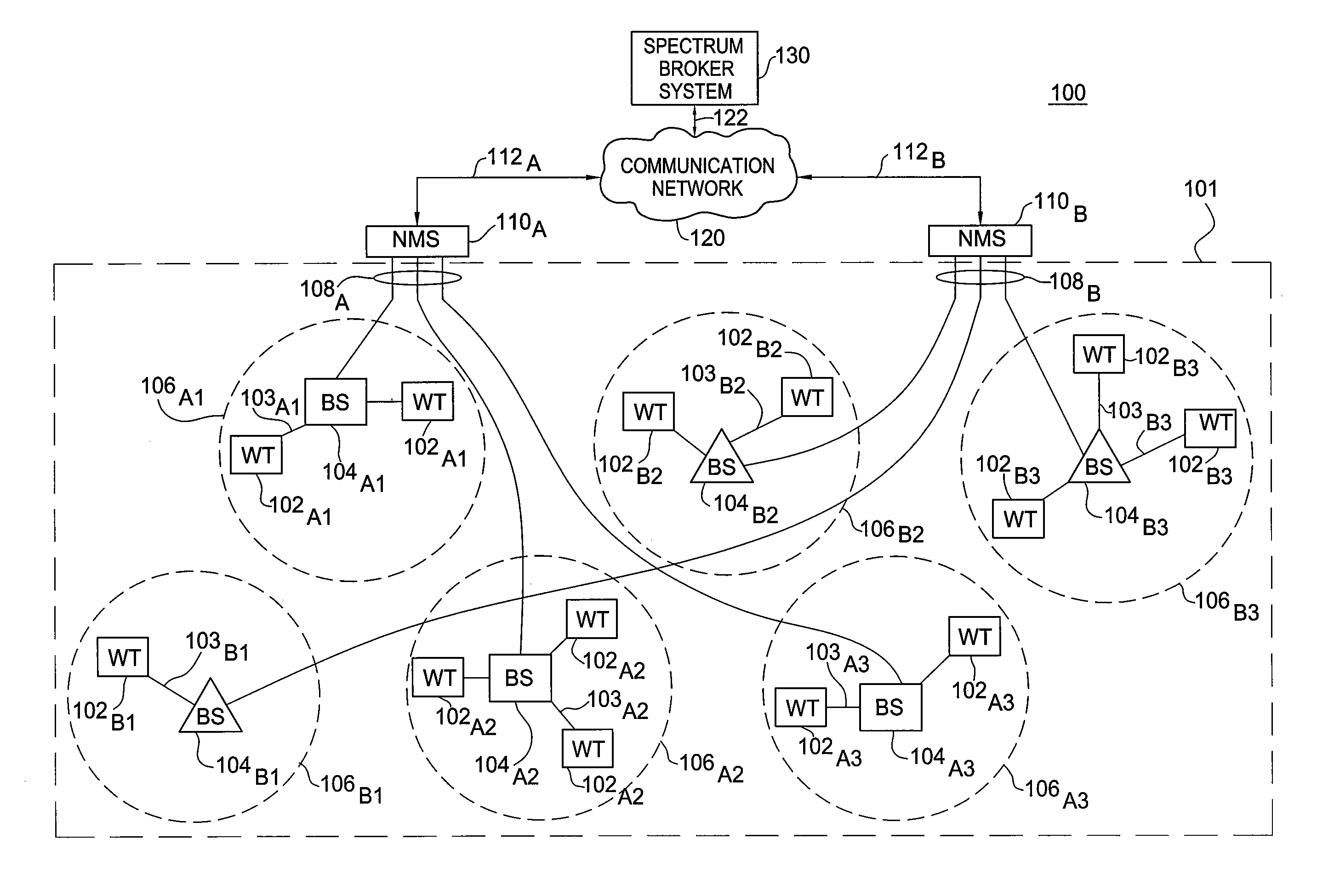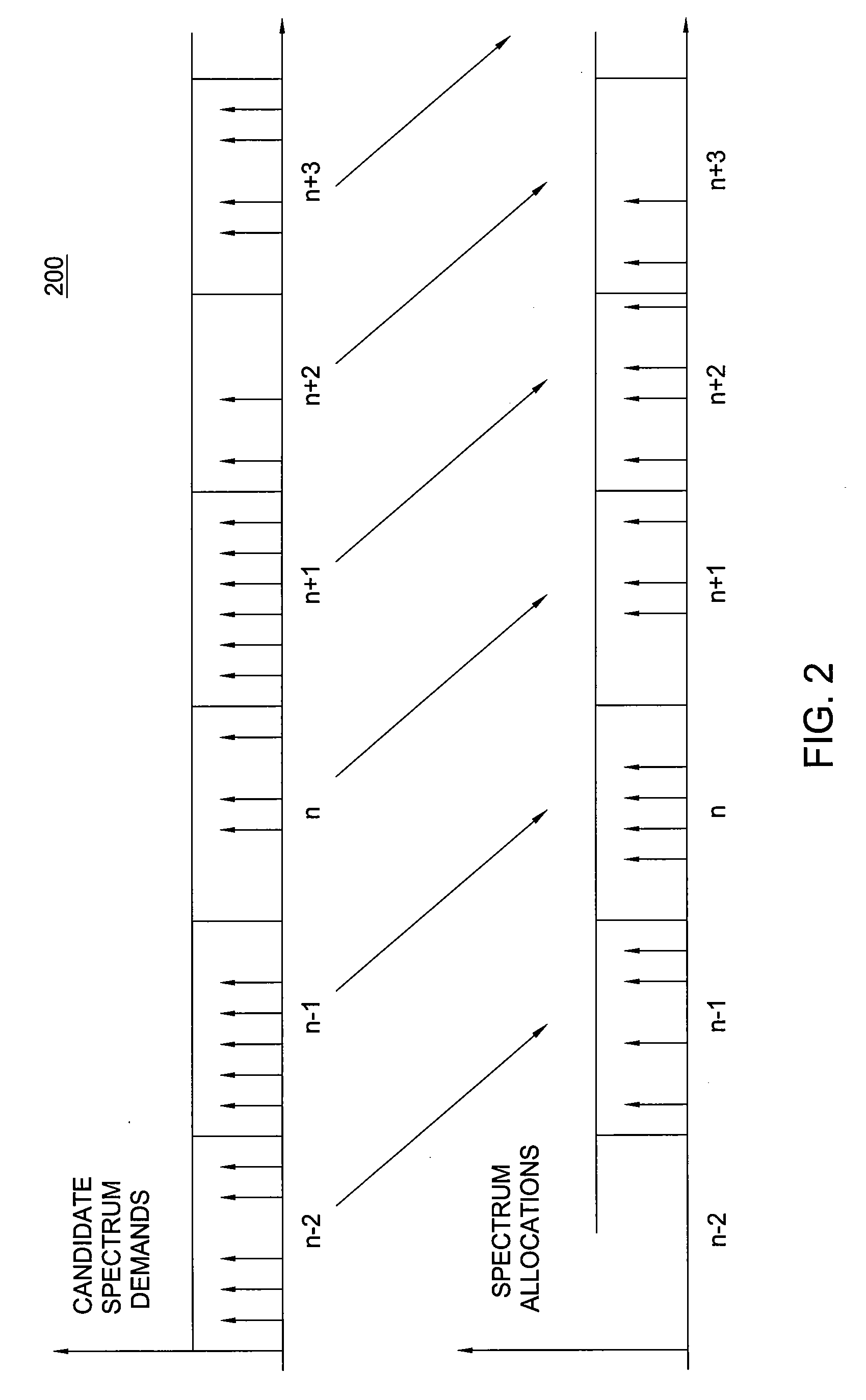Method and apparatus for spectrum allocation in wireless networks
a wireless network and spectrum technology, applied in the field of dynamic spectrum allocation in wireless networks, can solve the problems of slow process of acquiring licensed spectrum, slow innovation of both networks and services, and disadvantageous associated business and operational implications
- Summary
- Abstract
- Description
- Claims
- Application Information
AI Technical Summary
Problems solved by technology
Method used
Image
Examples
Embodiment Construction
[0016]The present invention provides spectrum management using dynamic spectrum allocation. The present invention implements a coordinated network in which allocation of spectrum within a region is dynamically controlled by a spectrum broker system utilizing regional spectrum demand aggregation and centralized spectrum management decisions. The present invention, utilizing dynamic wireless spectrum allocation methods, offers time-bounded access to a band of spectrum to various entities (e.g., to radio infrastructure providers (RIPs), network service providers (NSPs), and the like). In one embodiment, the present invention provides dynamic spectrum allocation in wireless networks employing Coordinated Dynamic Spectrum Access (C-DSA).
[0017]The present invention may utilize one of a plurality of demand processing models (e.g., batched, online, and the like) and one of a plurality of spectrum pricing models (e.g., merchant mode, simple bidding, iterative bidding, and the like) for provi...
PUM
 Login to View More
Login to View More Abstract
Description
Claims
Application Information
 Login to View More
Login to View More - R&D
- Intellectual Property
- Life Sciences
- Materials
- Tech Scout
- Unparalleled Data Quality
- Higher Quality Content
- 60% Fewer Hallucinations
Browse by: Latest US Patents, China's latest patents, Technical Efficacy Thesaurus, Application Domain, Technology Topic, Popular Technical Reports.
© 2025 PatSnap. All rights reserved.Legal|Privacy policy|Modern Slavery Act Transparency Statement|Sitemap|About US| Contact US: help@patsnap.com



